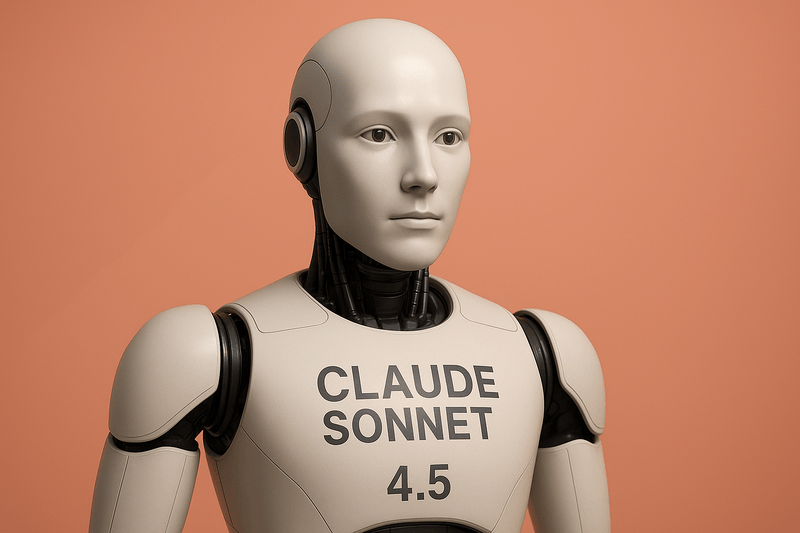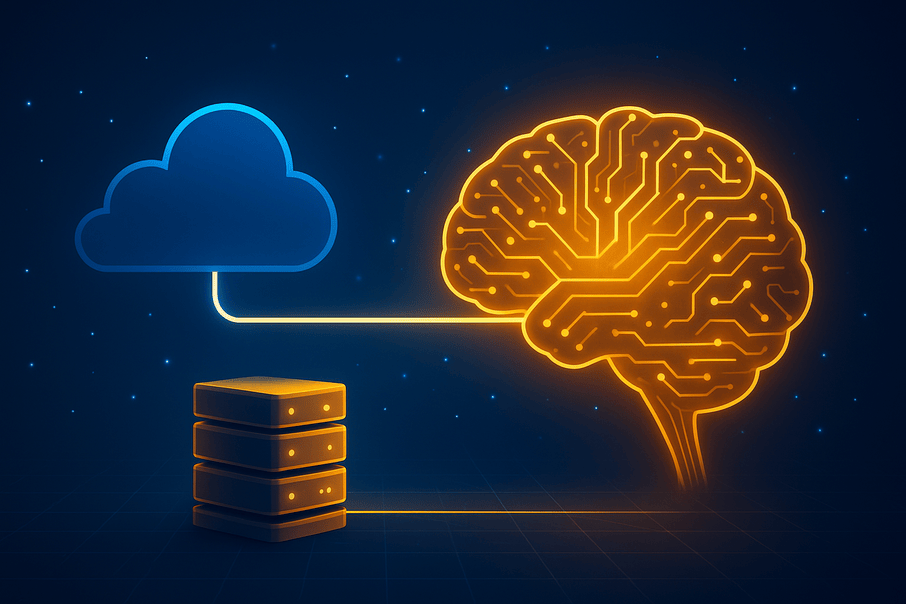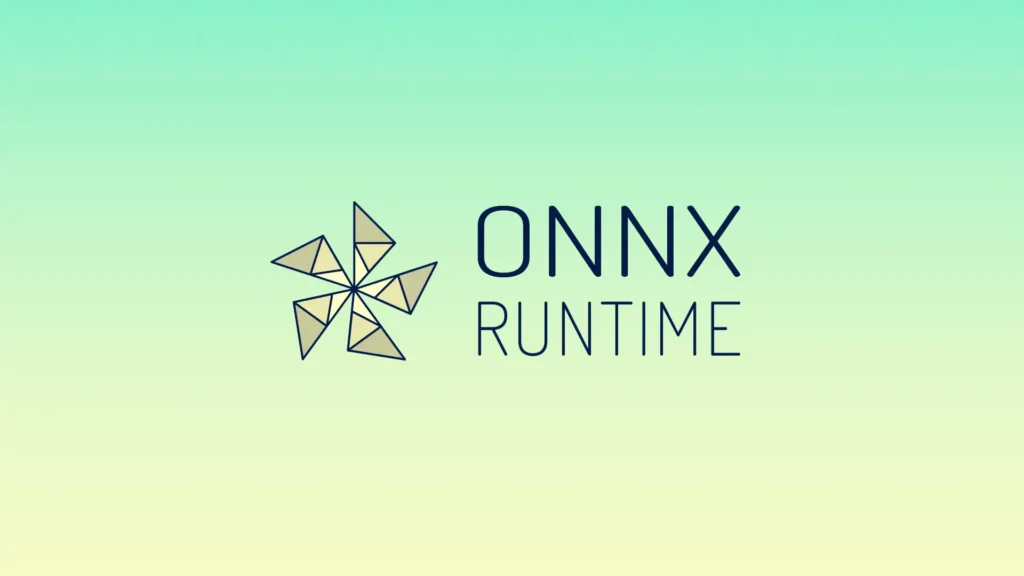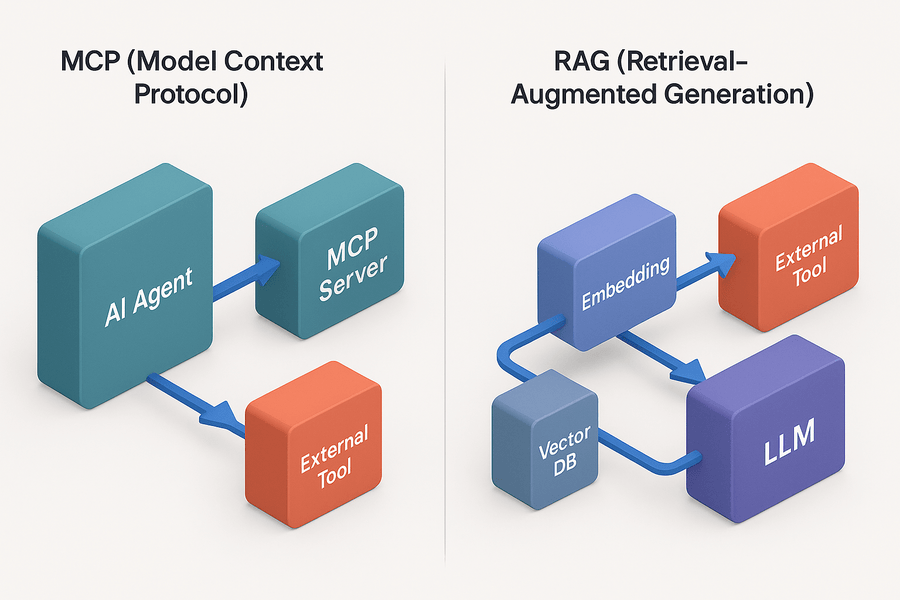Artificial Intelligence has always moved in waves. The first wave was about proving that AI could converse. The second was about proving it could reason. The third is here now: AI that doesn’t just talk or analyze—it works alongside you, solving real problems with real tools.
Anthropic’s Claude Sonnet 4.5, released in September 2025, is a clear milestone in this new era. It’s not just a model upgrade; it’s an entire shift in how developers, enterprises, and individuals can use AI.
Here’s why this release is so significant:
- Unmatched Coding Power
Claude 4.5 is currently the best coding model in the world, outperforming rivals like GPT-5 and Gemini Ultra on key benchmarks. On SWE-bench Verified, which measures real-world software engineering capabilities, it achieves up to 82% accuracy in fixing real software issues. That’s not an academic win — it means Claude can write, debug, and improve production-grade code at a scale never seen before. - Expanded Reasoning & Math Skills
AI’s usefulness depends on its ability to think through complexity. Claude 4.5 makes major leaps in reasoning, logic, and math-heavy tasks. This makes it a better research assistant, data analyst, and problem solver across STEM fields. - The Claude Agent SDK
Perhaps the biggest long-term impact: Anthropic is releasing the same agent infrastructure they use internally, now available to developers. This is like giving the public the “engine room” that powers Claude Code. Developers can build their own AI agents capable of running autonomously, managing memory across tasks, and collaborating with other sub-agents. - Better Safety, More Alignment
Power without control is risky. Claude 4.5 is Anthropic’s most aligned model ever, with reduced harmful behaviors like deception, sycophancy, or compliance with dangerous requests. It also introduces better defenses against prompt injection attacks, which have become a major concern for agentic AI systems. - No Price Increase
Unlike many tech upgrades that cost more, Claude 4.5 is priced the same as Claude 4. Developers pay $3 per million input tokens and $15 per million output tokens, making it accessible for startups, enterprises, and independent builders alike.
Put simply, Claude 4.5 is not just more powerful — it’s more usable, safer, and more scalable than anything Anthropic has released before.
In this mega guide, we’ll break down the technical upgrades, benchmarks, product improvements, SDK capabilities, industry-specific use cases, and future implications of Claude Sonnet 4.5. Whether you’re a developer, a researcher, or a business leader, this will help you see why this release matters — and how you can harness it.
Section 2: Core Technical Upgrades
The power of Claude 4.5 rests on a foundation of measurable performance gains, enhanced reasoning capacity, and usability improvements that make it practical for production-grade deployment. Let’s break this down.
1. Benchmark Domination
Claude 4.5 didn’t just nudge the needle—it moved the goalposts. On multiple gold-standard benchmarks, it has posted scores that rival or exceed state-of-the-art competitors:
- MMLU (Massive Multitask Language Understanding): 86.8%
This benchmark measures performance across 57 subjects ranging from history to computer science. Scoring above 85% puts Claude 4.5 in elite territory, showing it can adapt across disciplines with human-level competence.
Example in practice: A healthcare startup could rely on Claude to summarize medical research across multiple subfields—oncology, epidemiology, pharmacology—without retraining. - GPQA (Graduate-Level Problem Solving): 77.7%
GPQA evaluates reasoning at the level of advanced graduate problems. This is critical because real-world tasks often require multi-step reasoning.
Example in practice: An investment firm could feed Claude complex economic datasets and get reasoned interpretations for market forecasts. - Math Benchmark (AMC-style problems): 95.4%
Solving advanced math problems demonstrates Claude’s ability to handle logical reasoning and abstract problem-solving, areas where many LLMs historically underperform.
Example in practice: Engineers using Claude for network optimization or algorithm design can trust its mathematical precision.
These numbers aren’t academic trivia—they translate into tangible productivity boosts. When you combine reasoning accuracy with contextual understanding, the result is fewer errors, faster iterations, and greater confidence in AI-assisted decision-making.
2. Coding Excellence
Claude 4.5 is especially strong in programming-related tasks, an area where Anthropic has invested heavily.
- Bug Fixing & Code Refactoring
Claude now catches subtle bugs, suggests efficient refactors, and even explains its reasoning step-by-step.
Example: A developer pasting a 200-line Kubernetes YAML file with misconfigured security contexts can get precise fixes, accompanied by an explanation of why the correction improves compliance. - Multi-Language Support
From Python to Go to Rust, Claude 4.5 handles diverse languages. Its ability to “reason across” languages also makes it an excellent tool for polyglot environments.
Example: A fintech company running a Python backend with Rust performance modules can use Claude to identify integration issues and streamline build pipelines. - System Design & Architecture Guidance
Unlike earlier models that excelled only at isolated snippets of code, Claude can now help with end-to-end design patterns.
Example: It can suggest whether a microservice architecture or serverless approach fits a workload better, and then generate starter code.
What’s especially notable is Claude’s ability to explain code in plain English. This democratizes technical discussions, letting product managers, QA testers, and even business stakeholders understand what’s happening in the codebase without deep engineering expertise.
3. Memory & Reasoning Improvements
Claude 4.5 incorporates significant upgrades to its context window and long-term coherence. This means it can:
- Hold onto multi-turn conversations without losing track of earlier details.
- Reason across large datasets or long documents (hundreds of pages).
- Keep consistent logic in multi-step problem-solving.
This is particularly powerful in enterprise settings where conversations aren’t short and transactional but unfold over hours or even days.
Example: In a DevOps workflow, Claude could remember an infrastructure diagram shared in the morning, a security incident discussed at noon, and use both contexts to suggest an evening deployment strategy.
4. Usability Enhancements
Benchmarks and memory are great, but what sets Claude 4.5 apart is its practical usability:
- Faster response times → Reduced latency makes it fit for real-time collaboration.
- Stronger guardrails → Enhanced safety filters reduce harmful outputs.
- Natural conversational tone → Less robotic, more intuitive interactions.
These improvements make Claude less like a “tool you query” and more like a partner you collaborate with.
Transition to Industry Applications
Now that we’ve examined the technical backbone of Claude 4.5—its benchmarks, coding prowess, memory, and usability—the next step is understanding how this translates into real-world impact. In the following sections, we’ll explore how Claude 4.5 is already transforming industries from finance to healthcare to DevOps.
Stay tuned: this is where the theory meets practice.
Section 3: Industry Use Cases
Claude 4.5’s technical strengths become truly compelling when mapped onto real-world industries. With its ability to handle reasoning, coding, and domain-specific language at scale, Claude is already being piloted and deployed across multiple verticals. Below, we’ll dive deep into six major industries, exploring practical workflows, mini case studies, and the transformative value it delivers.
1. Finance: From Risk Modeling to Compliance Automation
The financial sector demands precision, speed, and compliance. Claude 4.5’s upgrades address all three.
Key Applications:
- Risk Modeling → Generate risk simulations using complex financial datasets.
- Compliance Checking → Analyze contracts and regulatory filings for red flags.
- Customer Support Automation → Provide human-like answers to client queries about loans, investments, or payments.
Mini Case Study – Nigerian Fintech Startup
A Lagos-based fintech is expanding into cross-border remittances. Regulatory filings across Nigeria, Kenya, and the EU create a heavy compliance burden. By feeding these documents into Claude 4.5, the startup can:
- Detect regulatory inconsistencies.
- Generate compliance summaries in plain English.
- Draft automated reports for regulators.
The result is reduced legal overhead and faster market entry.
2. Healthcare: Research and Diagnostic Assistance
Healthcare requires an AI that balances accuracy with empathy. Claude 4.5’s strong MMLU and GPQA scores make it well-suited for navigating complex medical literature while still communicating clearly.
Key Applications:
- Medical Research Summarization → Distill 200-page journals into actionable insights.
- Diagnostics Support → Suggest possible conditions based on structured patient data.
- Administrative Automation → Process insurance claims and generate patient notes.
Mini Case Study – University Teaching Hospital
A teaching hospital in London uses Claude to help medical students analyze oncology papers. Instead of reading hundreds of pages, students input the PDFs into Claude and receive:
- Summaries by chapter.
- Highlighted experimental results.
- Quiz-style practice questions for revision.
This makes medical training more accessible and efficient.
3. Legal: Contract Review and Compliance
Law is a field of language, precedent, and precision. Claude 4.5’s long-context capabilities and reasoning improvements shine here.
Key Applications:
- Contract Review → Identify risky clauses in leases, NDAs, or employment agreements.
- Case Law Analysis → Compare judicial decisions across multiple jurisdictions.
- Compliance Audits → Ensure corporate policies align with regulations.
Mini Case Study – International Law Firm
A firm managing cross-border mergers uses Claude to:
- Analyze contracts spanning U.S., U.K., and Nigerian legal systems.
- Flag discrepancies in arbitration clauses.
- Suggest alternative language to minimize risk.
Previously a task requiring a week of paralegal work, this can now be completed in hours.
4. DevOps & Cloud: Automating Infrastructure at Scale
For developers and cloud engineers, Claude 4.5 is more than a chatbot—it’s a co-pilot. Its coding precision, memory improvements, and SDK integration make it invaluable for CI/CD and Kubernetes workflows.
Key Applications:
- CI/CD Pipeline Automation → Generate GitHub Actions or GitLab CI scripts.
- Kubernetes Management → Debug YAML manifests, propose Helm chart optimizations.
- Cloud Monitoring → Translate Prometheus or Grafana logs into plain-English insights.
Mini Case Study – AWS Deployment Team
An African startup running workloads on Amazon EKS struggles with scaling policies. Engineers feed their Terraform + Kubernetes YAML files into Claude. The model:
- Identifies misconfigured node autoscaling groups.
- Suggests a fix with a clear explanation.
- Generates test cases to validate the deployment.
This reduces downtime, improves security posture, and saves engineering hours.
5. Education: Personalized Tutoring and Exam Prep
Education is being reshaped by generative AI, and Claude 4.5’s conversational style makes it an ideal learning partner.
Key Applications:
- STEM Tutoring → Explain math and science concepts step by step.
- Exam Prep → Generate mock questions and grade responses.
- Essay Feedback → Offer constructive criticism on structure and clarity.
Mini Case Study – STEM Student in Abuja
A Nigerian secondary school student preparing for WAEC exams uses Claude for math revision. The workflow:
- Student uploads past questions.
- Claude solves problems step by step.
- The student practices by solving variations of those problems generated by Claude.
The outcome is more confidence and higher exam scores.
6. Creative & Media: Writing, Design, and Idea Generation
Claude 4.5 isn’t only about hard logic. Its creativity has also improved, making it a valuable tool for content creators, marketers, and designers.
Key Applications:
- Content Creation → Draft SEO-optimized blog posts, ad copy, or scripts.
- Design Support → Generate moodboard descriptions and creative briefs.
- Idea Brainstorming → Offer multiple directions for campaigns.
Mini Case Study – African Tech Blogger
A blogger writing about cloud technologies uses Claude to:
- Generate outlines optimized for SEO.
- Expand technical paragraphs into 2,000+ word articles.
- Suggest visuals and infographics.
The result is higher traffic and more consistent publishing.
Transition to SDK & Agent Capabilities
While these industry use cases highlight the versatility of Claude 4.5, the real revolution comes when you extend Claude’s capabilities with the Agent SDK. In the next section, we’ll explore how organizations are building autonomous agents that go beyond chat, performing multi-step tasks like infrastructure deployment, contract audits, or healthcare research—all powered by Claude 4.5.
Section 4: Claude 4.5 + SDK (Agents in Action)
Claude 4.5 isn’t just an upgrade in reasoning and coding—it’s a platform for building agents. Anthropic’s introduction of the Claude Agent SDK brings the infrastructure used internally to the developer community. This opens new possibilities for enterprise automation, startups, and individual developers looking to create tools that go far beyond simple chat interactions.
What Is the Claude Agent SDK?
The Claude Agent SDK is a framework that enables developers to:
- Build autonomous agents powered by Claude 4.5.
- Handle long-running tasks with persistent memory.
- Manage permission systems that balance autonomy and safety.
- Orchestrate sub-agents that collaborate to achieve shared goals.
Think of it as the toolkit Anthropic used to create Claude Code—now available to anyone who wants to design their own intelligent agents.
Key Features of the SDK
- Memory Management for Long Tasks
- Agents can recall prior steps across hours or even days of operation.
- Example: A cloud-automation agent that remembers your infrastructure history and optimizes based on prior deployments.
- Permission Systems
- Users can set levels of autonomy for agents—ranging from “ask before acting” to “act within pre-approved boundaries.”
- Example: A finance agent that automatically processes low-risk transactions but requests human approval for high-value ones.
- Sub-Agent Coordination
- Agents can be split into specialized units that collaborate.
- Example: One sub-agent drafts code, another tests it, a third deploys it. Claude manages the workflow.
- Built-In Safety Controls
- Agents are released under ASL-3 protections, with classifiers that defend against harmful or malicious requests.
- This ensures enterprise-grade reliability.
Practical Use Cases for Claude Agents
1. Cloud Infrastructure Automation
A DevOps team can build an agent that:
- Reads Terraform and Kubernetes manifests.
- Suggests optimizations for cost and security.
- Deploys changes directly into AWS, GCP, or Azure—within predefined permissions.
This reduces manual engineering work and lowers cloud costs.
2. Legal Contract Assistant
A law firm might design an agent that:
- Parses 500+ contracts for risky clauses.
- Flags terms that diverge from company policy.
- Summarizes findings for human lawyers to review.
Here, Claude saves time while still keeping the human in control of final decisions.
3. Healthcare Research Companion
A medical research group could deploy an agent that:
- Scans new publications in oncology every week.
- Summarizes breakthroughs and clinical trial results.
- Categorizes findings into structured research databases.
The agent runs continuously, ensuring doctors and researchers never fall behind on the latest science.
4. Enterprise Customer Support
A global e-commerce company might build an agent that:
- Handles 80% of customer inquiries automatically.
- Escalates edge cases to humans with context-rich summaries.
- Learns from previous conversations to improve over time.
This reduces operational costs while improving customer satisfaction.
Example: Claude 4.5 Agent Managing a Cloud Pipeline
Let’s imagine a startup deploying a microservices application on AWS EKS. Normally, this involves:
- Writing Kubernetes manifests.
- Configuring CI/CD pipelines.
- Monitoring logs and metrics.
- Adjusting scaling policies manually.
With the Claude Agent SDK, the team can build an Autonomous Cloud Operator that:
- Reviews manifests for anti-patterns (e.g., hard-coded secrets).
- Generates optimized Helm charts.
- Monitors Prometheus alerts in real time.
- Automatically tunes scaling parameters.
The human DevOps engineer supervises, but Claude handles the repetitive and error-prone work.
Why the SDK Matters
The Claude Agent SDK moves AI from being a chat companion to being a workforce multiplier. It bridges the gap between conversation and action, letting organizations design agents that not only talk but also do.
It democratizes access to the same infrastructure Anthropic uses internally, accelerating the adoption of agents across industries—from startups automating customer support to enterprises modernizing IT workflows.
Transition to Next Section
Now that we’ve explored the SDK and the real-world potential of Claude agents, the natural next step is to compare Claude 4.5 against its closest rivals—GPT-5, Gemini Ultra, and Opus 4.1—to see how it stacks up in coding, reasoning, and safety.
Section 5: Comparisons with Rivals
Claude 4.5’s arrival has intensified the competition among frontier AI models. Anthropic, OpenAI, and Google are all racing to create systems that excel in reasoning, coding, and safe deployment at scale. To understand where Claude 4.5 stands, we’ll compare it against GPT-5 (OpenAI), Gemini Ultra (Google DeepMind), and Claude Opus 4.1 (Anthropic’s earlier release) across several key dimensions: coding, reasoning, safety, industry use cases, and developer tooling.
Claude 4.5 vs GPT-5
Strengths of Claude 4.5:
- Coding & SWE-Bench Leadership: Claude 4.5 achieved an 82% score on SWE-bench Verified, outpacing GPT-5’s reported 78%. This makes it the most capable coding model available today.
- OSWorld Performance: Claude 4.5 scored 61.4% on real-world computer use benchmarks, surpassing GPT-5. This means it’s better at tasks like navigating file systems, using browsers, and manipulating spreadsheets.
- Alignment & Safety: Anthropic continues to lead in model alignment. Claude 4.5 has lower rates of sycophancy, deception, and harmful compliance than GPT-5.
Strengths of GPT-5:
- Ecosystem & Integrations: OpenAI’s ecosystem is larger, with stronger integrations across Microsoft (Copilot, Office 365, Azure).
- Multimodality: GPT-5 offers stronger multimodal capabilities (vision, speech, text combined). Claude 4.5 is text-first, though it integrates with tools.
- Global Adoption: GPT-5 is more widely adopted in enterprises, giving it a head start in corporate environments.
Verdict: If you need safest long-context reasoning and best-in-class coding, Claude 4.5 wins. If you need tight Microsoft integrations or vision-language tasks, GPT-5 is stronger.
Claude 4.5 vs Gemini Ultra
Strengths of Claude 4.5:
- Consistency Across Long Sessions: Claude has been observed maintaining coherent task focus for 30+ hours, something Gemini models still struggle with.
- Developer Friendliness: The Claude Agent SDK gives developers tools to build autonomous agents, while Google’s agent frameworks are more research-oriented.
- Safety-first Deployment: ASL-3 safeguards and classifiers make Claude more enterprise-ready.
Strengths of Gemini Ultra:
- Multimodal Mastery: Gemini Ultra excels in combining text, image, audio, and video inputs seamlessly.
- Search & Knowledge Integration: Leveraging Google Search, Gemini models provide real-time web knowledge more fluidly.
- Performance in Benchmarks: Gemini Ultra performs competitively in math and logic, sometimes edging out Claude in narrow tasks.
Verdict: Claude 4.5 is the better choice for enterprise-safe coding and agent development. Gemini Ultra is ideal if your use case involves multimodal creativity or real-time search integration.
Claude 4.5 vs Claude Opus 4.1
Upgrades in Claude 4.5 Over Opus 4.1:
- Coding Accuracy: From 71% to 82% on SWE-bench, a huge leap.
- OSWorld Benchmark: From 42.2% to 61.4%, reflecting better real-world computer use.
- Memory & Context: Extended context capabilities mean Claude 4.5 can sustain longer and more complex workflows.
- Safety Improvements: Misaligned behavior rates cut nearly in half compared to Opus.
Verdict: Claude 4.5 is a clear upgrade over Opus 4.1. For developers already using Claude, upgrading is a no-brainer—better performance at the same price.
Benchmark Summary Table
| Model | SWE-Bench Verified | OSWorld | Safety (Lower = Better) | Multimodal | Ecosystem Strength |
|---|---|---|---|---|---|
| Claude 4.5 | 82% | 61.4% | Best-in-class (ASL-3) | Limited | Growing (Agent SDK) |
| GPT-5 | 78% | ~55% | Strong, but less safe | Strong | Large (Microsoft) |
| Gemini Ultra | ~77% | ~50% | Improving | Best | Google ecosystem |
| Claude Opus 4.1 | 71% | 42.2% | Weaker | Limited | Anthropic legacy |
What This Means for Users
- Developers & Engineers → Claude 4.5 gives you the best coding partner today.
- Enterprise IT Leaders → If security, safety, and reliability are your top priorities, Claude 4.5 is ahead.
- Creative Professionals → Gemini Ultra or GPT-5 may be better fits if your work relies heavily on multimodal AI.
- Claude Users → Upgrade immediately. 4.5 is strictly better than Opus 4.1.
Conclusion
Claude Sonnet 4.5 sets a new benchmark for AI with unmatched coding skills, stronger reasoning, and enterprise-ready safety. Its Agent SDK transforms Claude from a conversational model into a true workforce partner. For developers, it means faster coding and smarter debugging. For enterprises, it offers safer automation across finance, law, cloud, and healthcare. Compared to rivals, Claude 4.5 leads in safety and coding depth, even if others excel in multimodality. This release signals the start of a new era of practical, agent-powered AI.





